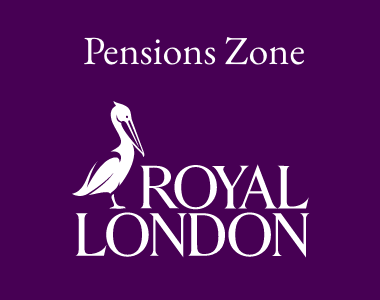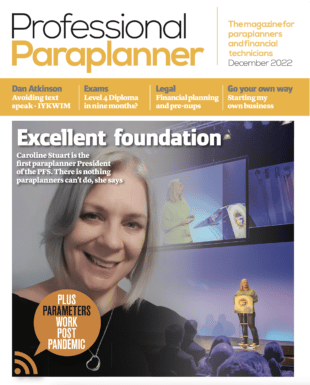Richard Cooper, a business development manager at The London Institute of Banking & Finance, looks at how paraplanners can help clients to reduce their inheritance tax liability through gifting
All the weddings throughout the summer made me think of gifts, which inspired me to write about gifting exemptions and how you – as a paraplanner – can use them to reduce clients’ inheritance tax (IHT) liability.
As this is the season when lovers tie the knot, we’ll start with gifts in consideration of marriage or civil partnership. Before the marriage or civil partnership takes place, gifts can be given free of IHT, as follows:
- each parent can give £5,000
- each grandparent can give £2,500
- any other person can give £1,000.
Of course, gifts between UK domiciled spouses and civil partners are also IHT exempt, whether they’re made during life or death. But remember, special rules apply if the gift is from a UK domiciled to a non-domiciled spouse.
Lifetime transfers – to a current or former spouse or civil partner, or a dependent relative for their maintenance – are not subject to IHT. Similarly, neither are payments for a child’s maintenance, education or training.
IHT exempt gifts
Other exempt gifts made during lifetime or on death include:
- gifts to charities and political parties
- gifts for national benefit, such as to museums, universities and libraries.
The ‘annual gift exemption’ allows individuals to gift up to £3,000 each tax year, and this allowance can be carried forward for one tax year only. The current year’s exemption will be used before any amount is carried forward. So, for example, a couple who have not used the exemption in the current or previous tax year could make exempt gifts of £12,000.
The ‘small gifts exemption’ allows gifts of up to £250 to be made to any number of people in the same tax year. However, these must be outright gifts, not made to a trust. The exemption won’t apply if the total of gifts to one person made in the tax year is more than £250. And you can’t combine the small gifts exemption with others.
Gifts made from normal expenditure out of income
The ‘normal expenditure out of income exemption’ allows the donor to make a series of IHT effective gifts from surplus income. There’s no monetary limit to this exemption, so the size of the exempt gift is only limited by the amount of the donor’s surplus income.
However, to qualify for the exemption, the gifts must:
- form part of normal expenditure , that is, a habitual pattern of gifting
- be made out of income
- leave the donor with sufficient income to maintain their usual standard of living.
You can demonstrate the habitual pattern of gifting from the history of gifts the donor has made. If there’s no such history, the exemption may still be claimed if you can show the donor committed to future gifting.
There’s no defined period for the length or the pattern of gifting to satisfy the condition. For example, a commitment to pay regular premiums to a life assurance contract could be satisfied merely by paying the first premium. Where the commitment is less clear, HMRC will typically look at a period of three to four years to establish a regular pattern of gifting.
Gifts don’t have to be made to the same recipient every year provided they are paid to recipients within the same category, for example children or grandchildren.
The size of the gifts should be comparable but where an exceptional gift is made, the exemption may still apply up to the value of the previous gifts. Any excess will fall outside of the exemption.
What is classed as income?
For the purposes of the normal expenditure out of income exemption, unlike income tax, gifts must come from current net income, not capital. As with normal accountancy rules, income means:
- earnings received from employment, such as a salary or payment for self-employment
- pension annuities and income from defined benefit schemes
- regular withdrawals from flexible pensions, including any tax-free cash element – subject to conditions
- the natural yield from investments, such as interest or dividends (not accumulated income)
- income derived from assets such as rental or trust income
- savings interest and income from ‘individual savings account’ (ISA).
HMRC deem that withdrawals from investment bonds are capital in nature, even though any gains are subject to income tax through the chargeable events legislation. Consequently, bond withdrawals cannot be used to increase the amount of surplus income to give away.
For example, stripping out all the tax-free cash and gifting it over a couple of tax years isn’t likely to establish a regular pattern of gifting. However, it would be possible to satisfy the exemption by giving away flexi-access drawdown – that includes withdrawals made up of 25% tax free cash and 75% taxable income – over a period of say ten years.
What qualifies as a usual standard of living?
After making gifts, the donor should be left with enough income to maintain their usual standard of living. This is the standard of living they enjoyed when initially making the gift.
If they have to resort to capital to maintain their lifestyle, the exemption may be lost or limited. However, if their circumstances change, due to say unemployment or a requirement for residential care, the exemption may not be completely lost.
For example, the transferor may have committed to pay regular insurance premiums, which they could afford. Later they have to pay nursing home fees, that were unforeseen when the policy was first taken out.
However, if the transferor made the commitment when the fall in income was foreseeable, the exemption would be lost.
Record keeping
This article started with weddings and I don’t want to talk about funerals and death. However, exemptions for IHT from gifting are usually made after a donor’s death by their personal representatives (PRs).
PRs rely on the information provided so keep a schedule of the gift made, including the date and exemption used. Form IHT403 has a section for income and expenditure that donors can complete whilst still alive.






























